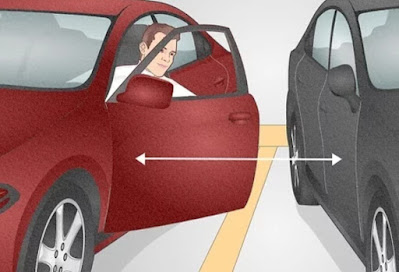First, find a safe and legal parking space, starting with wider spots if you're a new driver. Check for parking signs, restrictions, and obstacles like open gutters or rocks. Ensure the space is at least 3-4 feet longer than your car or about 1.5 times its length for easy parking.
Follow these four simple steps to parallel park your car effortlessly.
Step1: Position your car
Position your car parallel to the parked vehicle in front of the available space, maintaining at least one arm’s distance but no more than half your car’s width. Align either your rear wheels with the back of the parked car or your mirrors with the adjacent car’s mirrors for better visibility. If space allows, positioning your rear tires slightly beyond the parked car’s rear can also work.
Step2: reversing inLock the steering to the extreme left, engage reverse, check mirrors, and start backing up. Keep an eye on the car behind through the IRVM and the front car’s rear. Look over your shoulder for better visibility. Reverse until your front wheels align with the rear of the front car, using the ORVM to monitor spacing. If using a reverse camera, follow the dynamic guidelines while also judging spacing manually.
Step3: straighten up and turn the car back in.
Straighten the steering and continue reversing as your car nears the pavement and rear parked car. Use the passenger-side ORVM to monitor surroundings. Once the front clears the parked car, turn the steering in the opposite direction while ensuring enough space at the front and rear. Use parking sensors and the reverse camera for guidance but rely on visual judgment for precise maneuvering.
Step4: The final alignment of the carOnce in the parking space, straighten the steering and adjust as needed. Align with the front car’s license plate or check the ORVMs for proper positioning. Look over your shoulder and adjust mirrors for a final space check.










